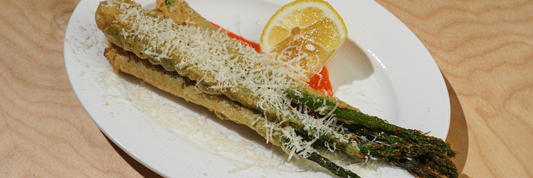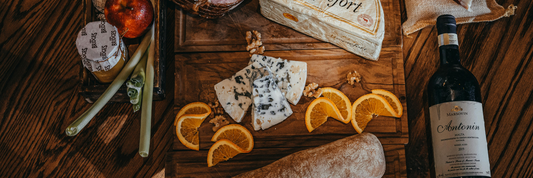In recent years, metal straws have been considered one of the sustainable alternatives to plastic straws. Although better than plastic straws, are metal straws actually safe for the environment? If not, what are the best straw options for the environment? The following article will clarify these issues.
Advantages and disadvantages of metal straws
Reasons Why Metal Straw is Unsustainable
Reason 1: Environmental impact of the production process
Unlike plastic straws, metal straws have a greater environmental impact during the extraction and production phase leading to
- Higher Carbon Emissions: Studies have shown that producing a single metal straw can emit 150-200 times more carbon dioxide than a plastic straw. This significantly increases the ecological footprint of metal straws compared to plastic straws.
- Non-Renewable Resource Depletion: Metal straws are made from non-renewable resources such as metal ores. The extraction of these resources can cause significant environmental damage, including habitat destruction, water pollution, and air pollution.
- Greenhouse gas emissions: The production process emits a large amount of CO2, contributing to global warming. A study showed that producing one metal straw emits 150-200 times more CO2 than one plastic straw.
- Energy consumption: The production process consumes a lot of energy, especially for metals like steel.

Reason 2: Durability and Reusability
To offset its ecological footprint, a metal straw must be used at least 150 times to surpass the environmental cost of production compared to the plastic alternatives it replaces. Therefore, using metal straws less than this threshold is not considered sustainable.
Reason 3: Recycling Issues
There are two main recycling issues with metal straws, including:
- Low Recycling Rate: Due to various factors such as difficulty in collection, sorting, and recycling, the recycling rate of metal straws remains low. Most metal straws are discarded after use, leading to environmental pollution.
- Environmental Pollution: The metal recycling process can also cause environmental pollution due to the use of chemicals and high temperatures. Proper treatment of emissions and waste from the recycling process is crucial to ensure environmental safety.
However, metal straws are reusable and recyclable, they still have significant environmental impacts, especially during production. They are not necessarily a better choice than plastic straws unless they are used frequently and properly.
For convenience, ease of cleaning, or large events, what are some eco-friendly straw alternatives?
Reusable straws made of natural materials
Eco-friendly Straws Alternatives to Metal Straws and Plastic Straws
Metal straws have become a popular alternative to plastic straws, but they have a high ecological footprint and may not be the most sustainable option for large events. Here are some eco-friendly alternatives that are better suited for public gatherings such as festivals, fairs, supermarket food courts, and company cafeterias.
Paper Straws
Pros:
- Widely available: Paper straws are easily found in most supermarkets and online stores, making them a convenient choice for businesses and consumers.
- Affordable: Paper straws are generally the most cost-effective option, making them suitable for budget-conscious individuals and businesses.
Cons:
- Not suitable for hot drinks: Paper straws quickly become soggy and lose their structural integrity when used with hot beverages, diminishing the customer experience.
- Limited lifespan: Paper straws have a short lifespan, requiring frequent replacements, which can add to waste generation.
Biodegradable Straws (PLA Straws or Plant-Based Straws)
Grass straws used for tea and coffee - decompose naturally within 6 months
Pros:
- Diverse drink compatibility: PLA straws can be used with various drinks, including hot beverages, as they do not become soggy in water.
- Compostable: PLA straws are commercially compostable in designated facilities, offering a more sustainable option than traditional plastic straws and reducing plastic waste.
Cons: Higher cost. Compared to paper straws, PLA straws are generally more expensive, which may be a factor for some consumers and businesses.

Sugarcane Straws
Pros:
- Sustainable source: Made from sugarcane bagasse, a byproduct of sugar production, sugarcane straws provide an eco-friendly alternative to other materials.
- Biodegradable and compostable: Like PLA straws, sugarcane straws are biodegradable and can be composted in industrial facilities, further reducing waste.
- Versatile and durable: Suitable for both hot and cold drinks, sugarcane straws do not become soggy and offer a longer lifespan compared to paper straws.
- Eco-friendliness: Generally considered more eco-friendly than PLA straws due to their natural source material and lower production impact.
Cons: Limited availability. Sugarcane straws may require specialized sourcing and may not be as readily available as paper or PLA straws in all locations.
Bamboo Straws
Pros:
- Reusable: Bamboo straws can be washed and reused multiple times, reducing waste compared to single-use options.
- Durable: Bamboo is a naturally strong material, making these straws durable and long-lasting.
- Sustainable resource: Bamboo is a rapidly renewable resource with natural antibacterial properties, contributing to environmental sustainability.
- Suitable for diverse drinks: Bamboo straws can be used with various drinks, making them a versatile choice.
Cons: Requires cleaning. Unlike single-use options, bamboo straws require regular cleaning after use, which may be inconvenient for some users.
All the straw options mentioned above are available at kimecopak.ca. At Kimecopak, we offer wholesale biodegradable straws for the North American and Canadian markets with many attractive incentives for restaurants and businesses. For more information, please contact us via email at halo@kimecopak.ca or our Facebook Facebook Fanpage.
In conclusion, due to their high ecological footprint, whether metal straws are sustainable or not depends largely on the number of times they are used. Besides metal straws, there are many alternative straws that can be used, such as paper straws, sugarcane straws, and bamboo straws.




